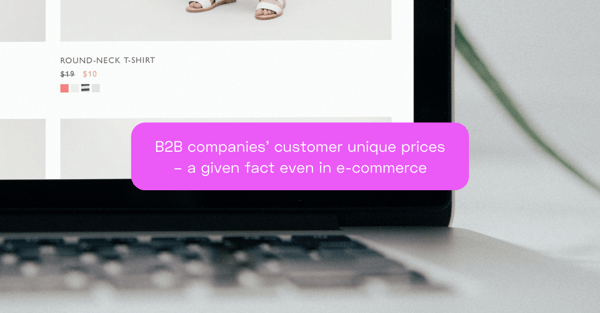The price isn't everything, but it's clearly a decisive factor in whether the customer chooses you over one of your competitors. Pricing goods and services may feel like you need a PhD - as though you can base it on anything and everything, from gut instinct to advanced models. Regardless of which path you choose, we know that prices will always be dynamic, and you'll want to be able to change your strategy based on what is happening locally as well as in the world. If you have a larger range, it can quickly become overwhelming if you have to adjust prices manually.
We've listed some strategies below to help you work out what to consider when you're pricing. This guide is mainly for retailers, but it can also be helpful if you're a manufacturing company.
Set prices and recommended prices
The most common and easiest way of pricing is to set fixed prices for your range. This pricing is usually set according to the recommended retailer prices. However, for retailers, the recommended prices are just that - recommended - and are mostly used as a comparison. One strategy is to use recommended prices as a basis for your own pricing - for example, you may always want your own prices to be 10-15% below the recommended price depending on the category.
Marginals and cost-based pricing
If you don't want to price according to the recommended price, you can use the purchase price when calculating your prices. You might want to secure your margin or always have a mark-up based on the purchase cost. Just to clarify in case you don't remember the difference: the margin is the selling price divided by the purchase cost, and the markup is what you put on top of the purchase price. In short, you can say that to get a 30% margin, you need a markup of 42.9%. This is especially important in the current climate with volatile purchasing - you feel reassured if your margins are secured.
While we're on the topic of economics, it may be worth going back to basics. Remember that you can look at the purchase cost in two different ways: replacement cost and acquisition cost. Replacement cost is simply the price of buying a new item from a supplier. Acquisition cost is the average cost for all the units of an item in stock, and includes not only the cost of the purchase but also overheads such as wastage, handling, warehouse rent, etc. In different industries, there may be different strategies for which of these values you use as a basis for calculating your sales prices.
Competition-based pricing
Another strategy is to look at what your competition is doing, especially if you are a retailer of goods. Even if you want to own your own pricing, the consumer often decides with their wallet. That doesn't mean that you always want to be the cheapest on the market. Perhaps you want to ensure that you are always in the top five in certain categories, but in addition to price, you want to attract your customers with secure deliveries, good customer service or additional services. Of course, you should always make sure you keep an eye on the margins, so you don't follow your competitors into unprofitable business.
All industries have their own strategies and models. Whatever you choose, make sure you use a tool that gives you the flexibility to adjust your pricing to your requirements.




